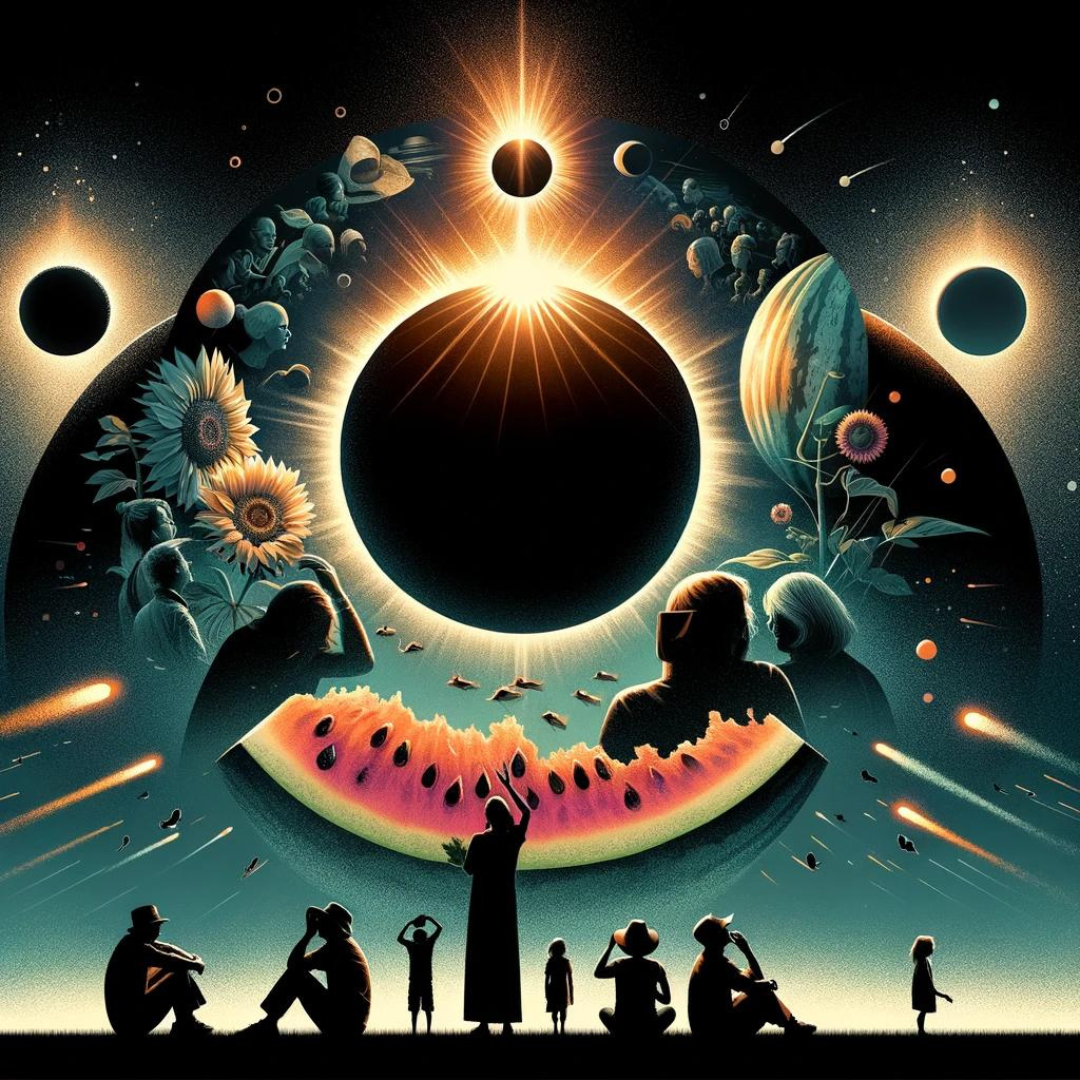
In the unyielding buzz of modern life, it can often be difficult to feel present and connected to the world around us. Yet, every so often, a phenomenon arises that has an undeniably powerful impact on our collective conscious — inspiring, confounding, and uniting people all over the world. Such is the case with the solar eclipse; a rare and monumental event that can evoke a range of stunning and deeply-felt emotions, while offering a brief respite from the hum of the everyday.
In the hours leading up to a total solar eclipse, anticipation swiftly mounts as the sky grows ever darker. The sight of the moon slowly creeping across the sun, covering it entirely for a few rare moments, can inspire astonishment, wonder, and an intense feeling of awe. The world around you is bathed in an otherworldly light, as the air around you grows chillingly still. It’s an awe-inspiring moment, to be sure, and capturing the emotional impact of the occasion is no small feat.
This is where the visual arts come in; whether photography, painting, or journaling, capturing a solar eclipse in all its glory is a powerful, evocative, and deeply personal way to share the experience.
Photographing a Solar Eclipse
Photographing a solar eclipse is one of the most rewarding ways to capture the event, and it can be a powerful way to ensure that the memories of such an incredible sight are never forgotten. The process of capturing the eclipse is also one that takes some dedication and patience, as the event only lasts for a few minutes. Some pre-planning and practice are also required to get the best results — as the moon moves across the sun, the lighting will change drastically and the camera settings needed to capture the moment may alter as well.
When photographing a solar eclipse, you’ll want to use the proper solar filter lenses and avoid looking at the sun directly without eye protection; otherwise, you risk causing damage to your vision. Aim to take photos over the span of the event – from when the eclipse first begins to when it reaches its climax.
Painting Your Solar Eclipse
Artists can also choose to express their emotions and experiences with a solar eclipse through the medium of painting. While painting a solar eclipse can be a challenging and intricate process, it can also offer the artist the freedom to convey the surreal and transformative nature of the event in a way that photography can’t. Artists can choose to work with any number of mediums to capture the event, from watercolor to oils to acrylics, and each offers its own set of expressive possibilities.
When painting a solar eclipse, the artist has the freedom to experiment with color, form, and light, in an effort to capture the mysterious and intuitive quality of the solar eclipse. The resulting piece can vary dramatically, from a realistic rendering of the event to a more abstract representation, and each will communicate the powerful emotional impact of the event in its own unique way.
Journaling Your Solar Eclipse
Finally, journaling can be an insightful and revealing way to express and process the emotional impact of a solar eclipse. Journaling can take many forms, from the traditional diary entry to free-writing to sketching and drawing, and any of these can be a powerful means to document and explore the moment. When journaling a solar eclipse, the writer may choose to reflect on the experience — the people they were with, the sights and sounds, and their own reactions and emotions — or to otherwise document the event.
Journaling a solar eclipse can also be a compelling way to explore the metaphors and meaning behind the event, as the eclipse is often associated with themes of transformation, unity, and the cyclical nature of time. Whatever form the journaling takes, the resulting piece will likely hold a deep and personal meaning to the writer.
Capturing a Solar Eclipse in the Visual Arts
The powerful, emotional impact of a solar eclipse can make for a subject of stunning and expressive art in the visual arts. Photographing the event is an exciting and rewarding experience that offers the chance to capture the event as it unfolds. Painting a solar eclipse is an expressive and deeply personal way to share the experience of the event, while journaling it is a powerful means for the writer to process their emotional reactions and explore the symbolism of the event in a personal and meaningful way. No matter the medium, an artist has the power to express and share the powerful impact of a solar eclipse in a memorable and lasting way.
